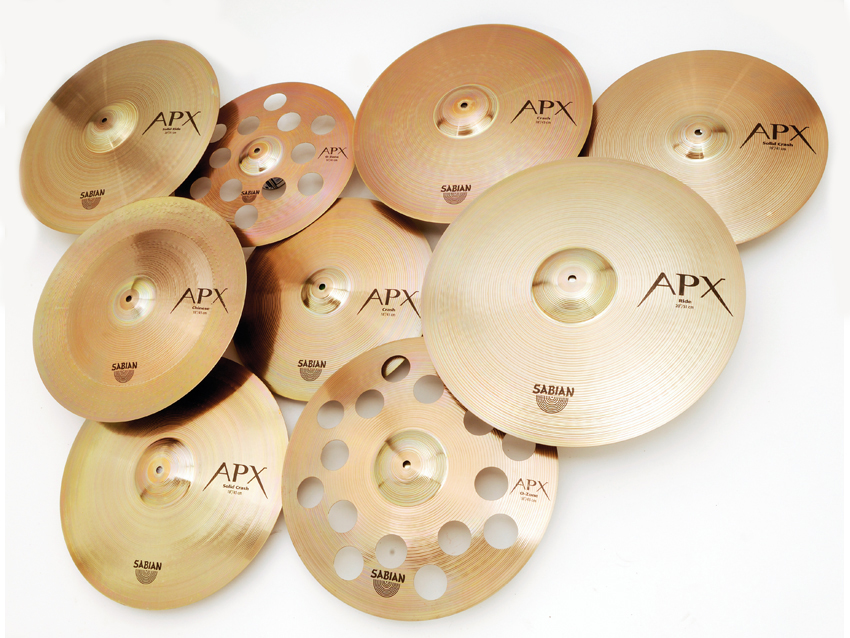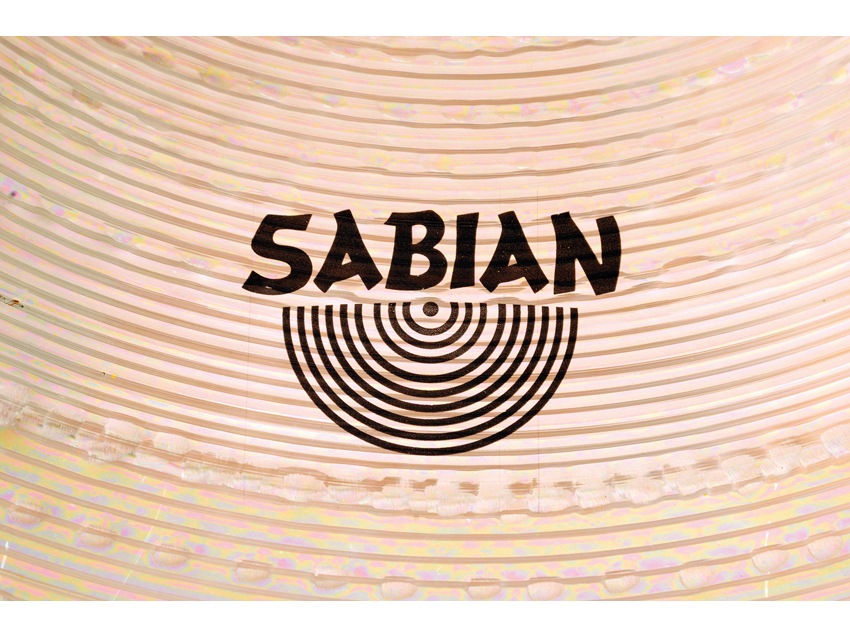MusicRadar Verdict
The APXs possess a searing top end that enables them to project cleanly, and some of the APX models - most notably the Chinese cymbals - are superb examples in their own right. The only word of caution would be to make hearing protection a priority when exposing yourself to this intensity of cymbal and musical setting. All in all, mission accomplished.
Pros
- +
An impressive set of cymbals offering a mix of assertiveness, trashiness and speed.
Cons
- -
They are as loud as they come - you'll need some ear protection!
MusicRadar's got your back

Sabian APX Cymbals

Sabian APX Cymbals
Launched at 2008's Winter NAMM and Frankfurt music shows, Sabian's new APX range has been conceived to fit a specific brief. A glance at the accompanying advertising campaign, which features Sabian endorsees snarling from behind a shattered pane of glass, should drop a few hints as to the nature of the cymbals on offer. From the initial cymbal prototypes to the finished artwork for the ads, it's clear that the range has a target audience in mind.
Build
APXs are marketed as professional cymbals, and priced accordingly. While the majority of Sabian cymbals are made from tin-rich B20, Sabian has chosen to make APX cymbals from B8 because it is a more suitable alloy for creating the sounds that Sabian was seeking.
Beginning life as rolled sheets of B8, the cymbals are cut and stamped into shape. They are then hammered before being lathed by hand. The lathing is quite intense, with tight, deep grooves covering both sides of each cymbal (with the exception of the Chinese models, on which there is a little less). Though it is largely camouflaged by the lathing, where visible the hammering is as concentrated as the lathing.
The cymbals vary in colour, from typically orangey B8 hues to a brassier yellow, often combining elements of both on individual models. All the cymbals feel distinctly stiff, with little if any give.
Hands On
"The 16" crash really began to show the characteristics referred to by Sabian, being aggressive, fast and, for want of a better expression, 'in yer face'. A shower of toppiness greeted each strike and, instead of quickly dying with the decay, it seemed to chase its way around the grooves, lending a sizzling feel to the cymbal".
The range has landed with a full complement of hi-hats, rides, crashes, splashes, Chinese and O-Zone crashes. A good deal of the models have two types of cymbal in each dimension - a regular APX and a 'Solid' version. The difference between the two is that the Solid variants are heavier, which is intended to endow them with a denser, harder sound.
We began with three splashes (8", 10" and 12"). The 8" model's opening flash of brightness was matched a little too enthusiastically by a sonorous note below. The top end of the 10" and 12" splashes was more dominant, and they both displayed a silvery sharpness that was capable of travelling some distance. Standing over them confirmed an impressive degree of volume, too.
Next up from the splashes came a 14" crash, which possessed similar qualities to the bigger splashes - its larger diameter ensured that it had a bigger voice. The following three sizes of crash (16", 18" and 20") all come in Solid versions.
Want all the hottest music and gear news, reviews, deals, features and more, direct to your inbox? Sign up here.
The 16" crash really began to show the characteristics referred to by Sabian, being aggressive, fast and, for want of a better expression, 'in yer face'. A shower of toppiness greeted each strike and, instead of quickly dying with the decay, it seemed to chase its way around the grooves, lending a sizzling feel to the cymbal.
The 16" Solid crash was noticeably louder still and had a meatiness to it that suggested it could slice through saturated backlines. There were similar distinctions between the 18" and 20" pairs of crashes, with the regular models being brighter on opening while the Solid variants blasted out powerful mid-tone frequencies with ease. On their own, any of this quartet were painfully assertive, while in the mix they were distinctly audible.
Both of the two Chinese models (18" and 20") were exceptional, being blindingly quick and fantastically trashy. A full hit prompted a near decapitating eruption, while gentler rousing revealed subtle depths in a gloriously dark swell. Either of them would complement any set-up.
In comparison with the Chinese cymbals, the pair of O-Zone crashes was downright brutal. Essentially regular crashes with a series of 50mm-wide holes drilled through them, they smash out conflicting high frequencies with venom. Although it was probably never intended to be, the 18" O-Zone can be used as a weird ride with surreally trashy overtones.
Four rides are divided into regular and Solid denominations over 20" and 22" diameters. In the main, the distinctive toppiness found in the crashes is here in abundance too, with a sparkling glassy 'ping' being the order of the day. The Solid versions provide more of the bell sound in the 'ting', while the bells themselves are more penetrating.
Of the four available pairs of APX hi-hats, only three were sent for review (14" regular, 13" and 14" Solid hats). The 14" regular hats gave a surprisingly polite response when closed, giving a clean, tight stick sound. Once partially opened though, they soon delivered a fat crunch that had plenty of cut to it. Both pairs of Solid hats had more of an edge to them, with attacking strokes revealing a harder, dirtier sound at their core.